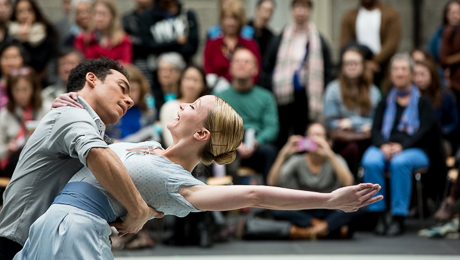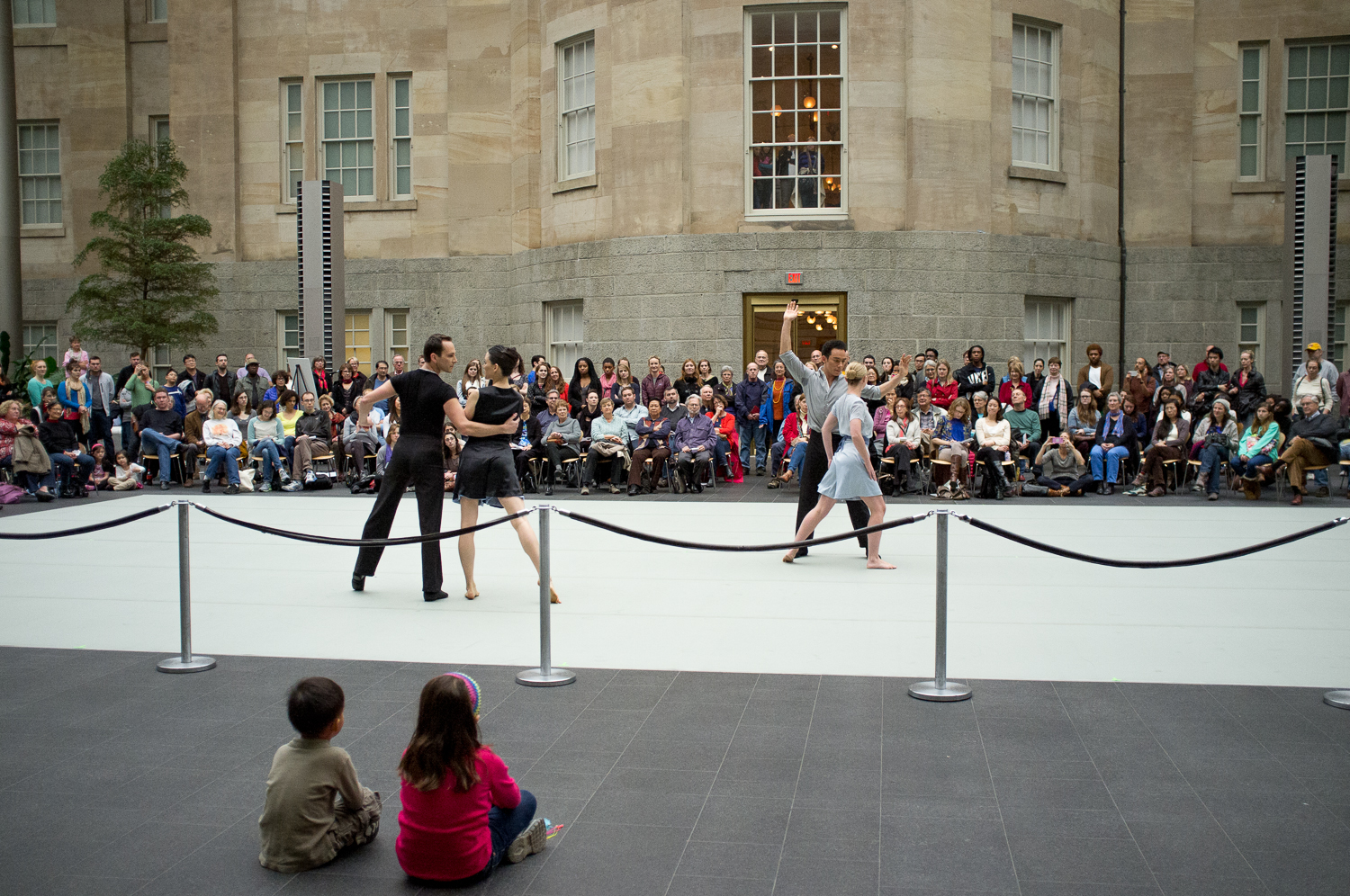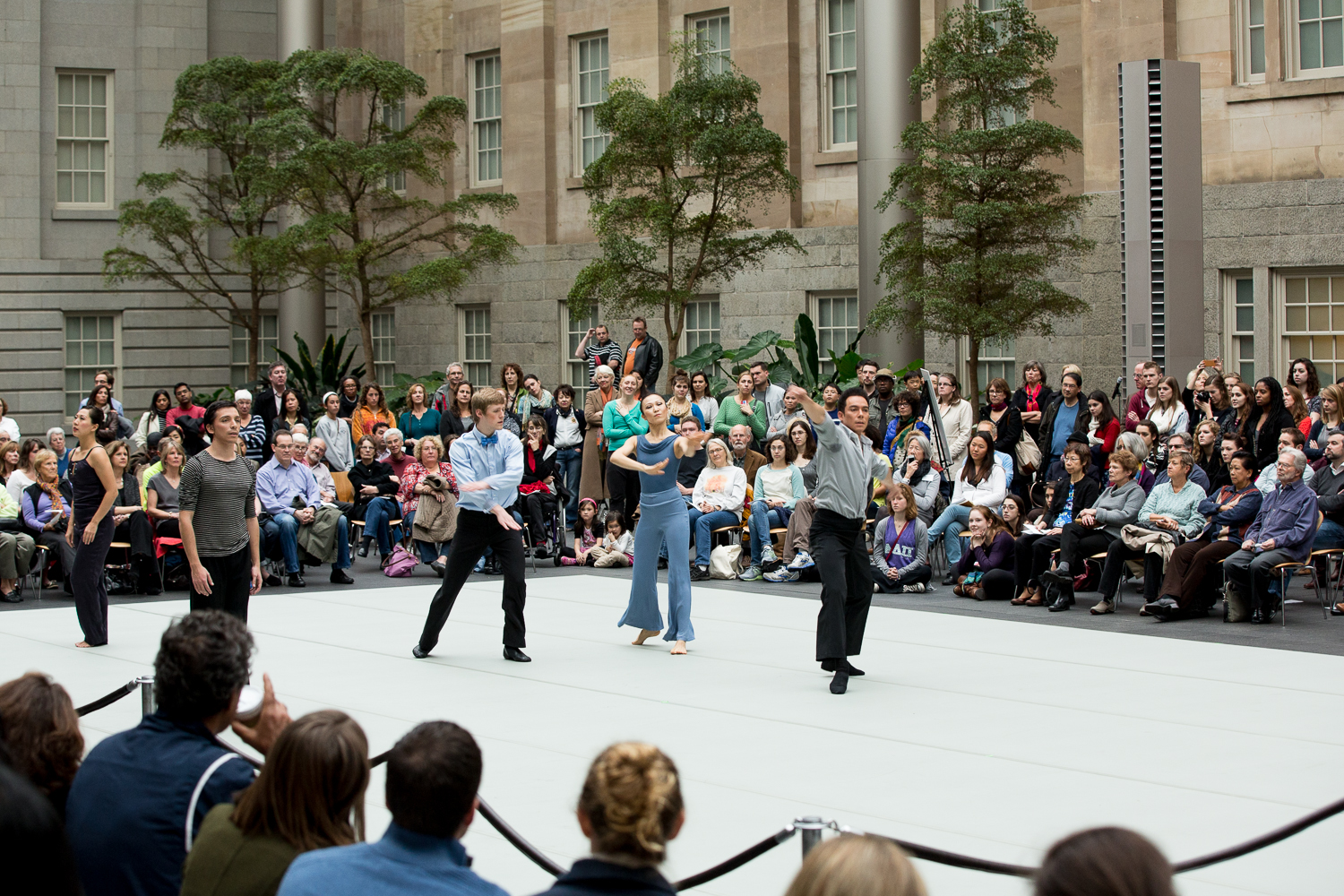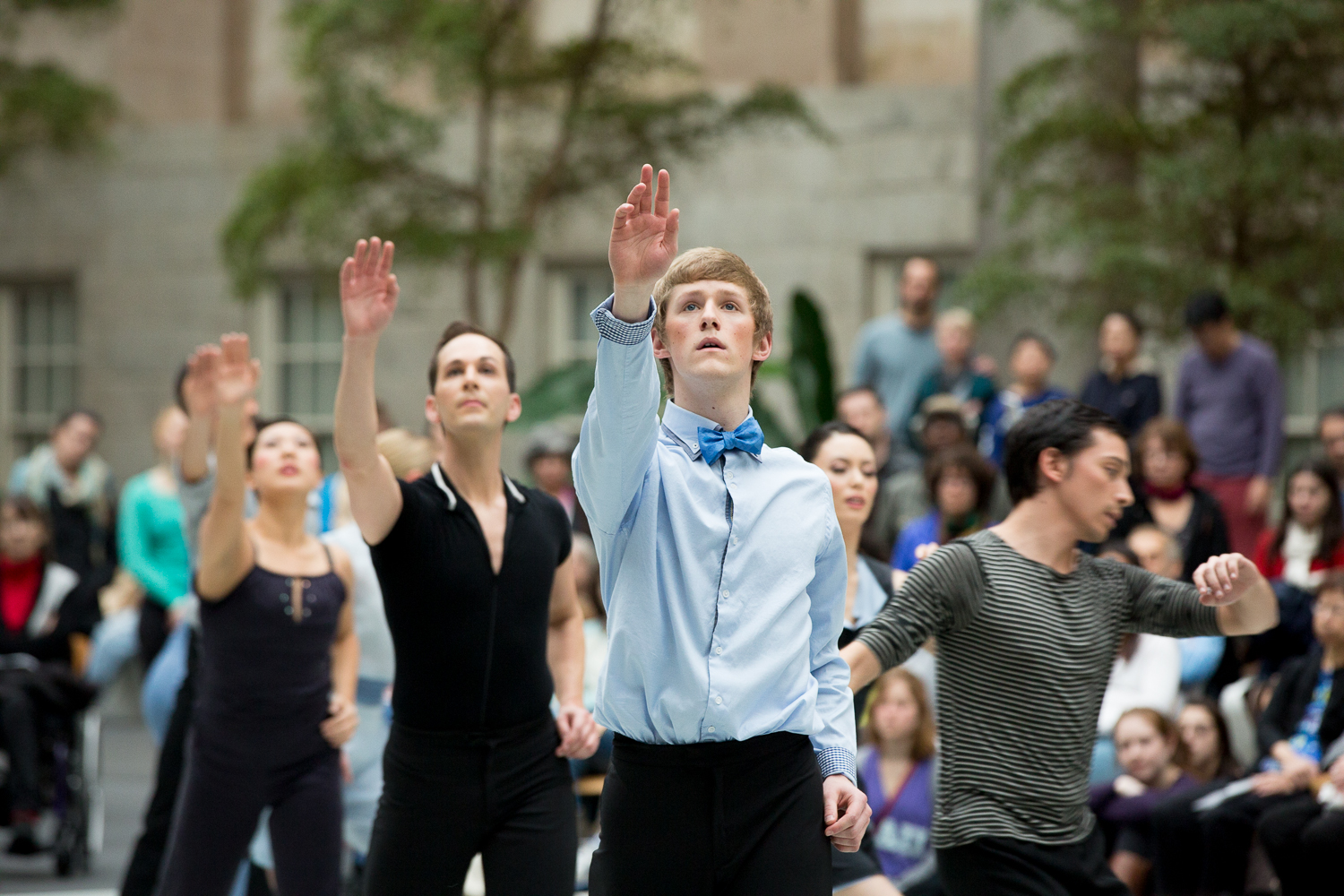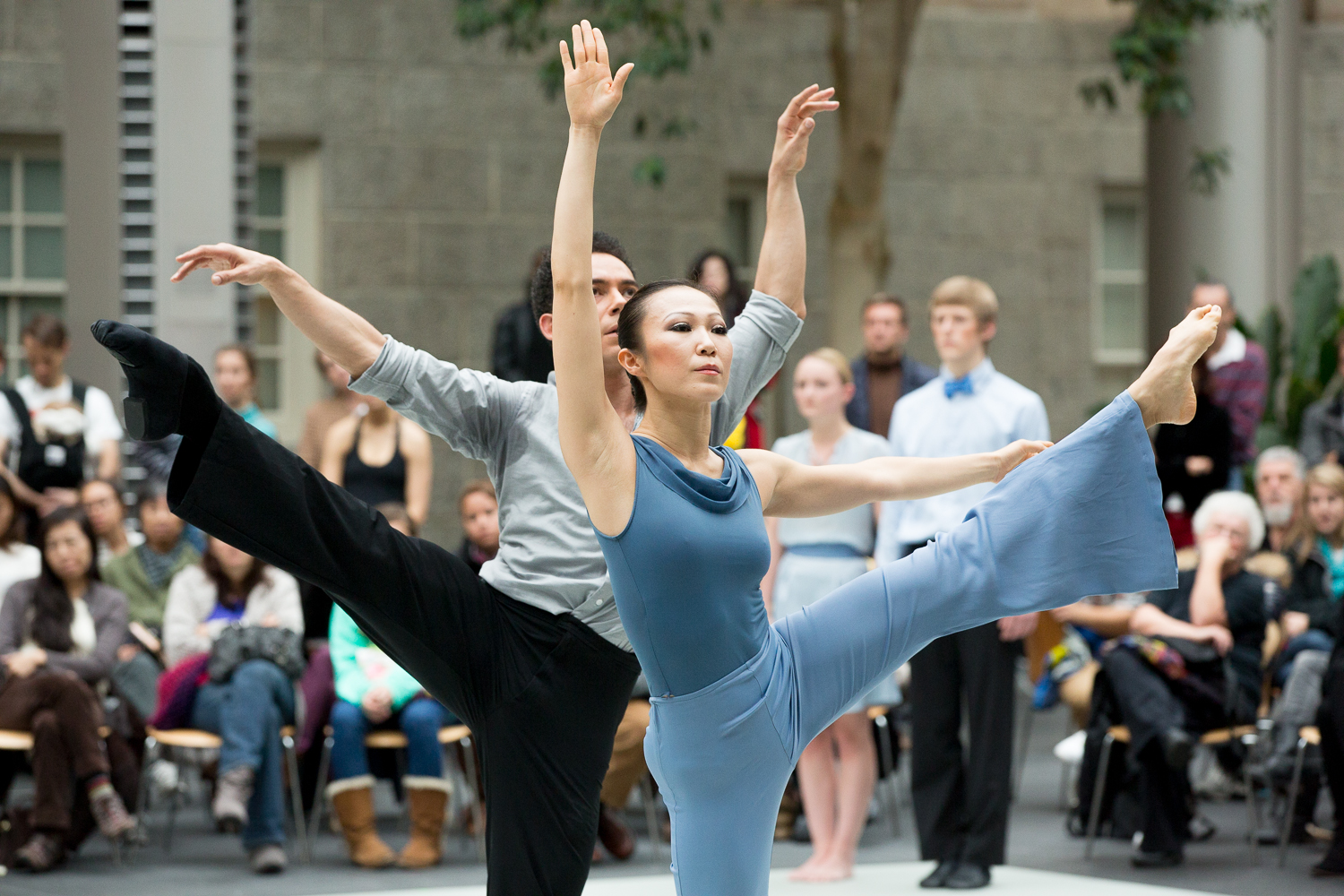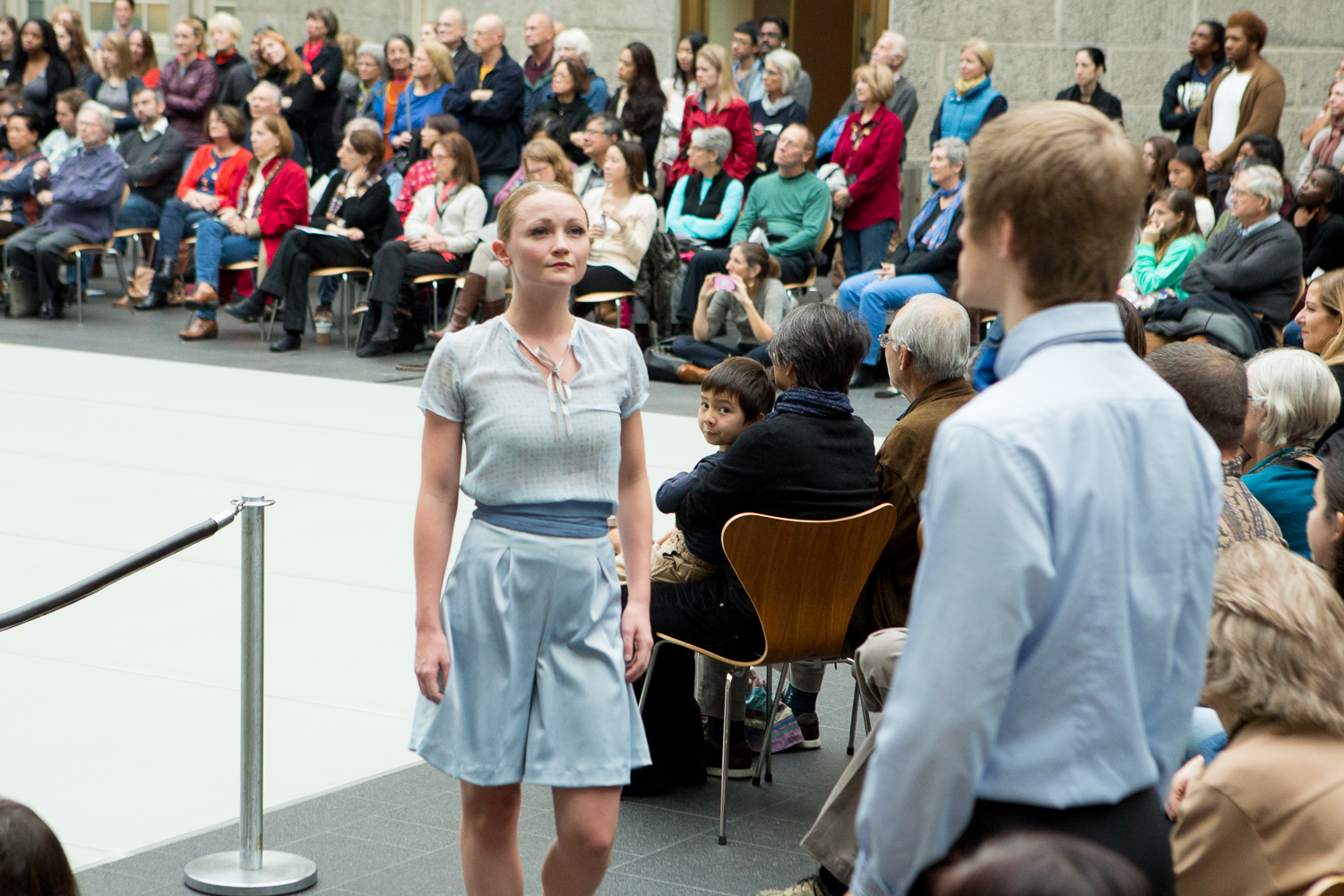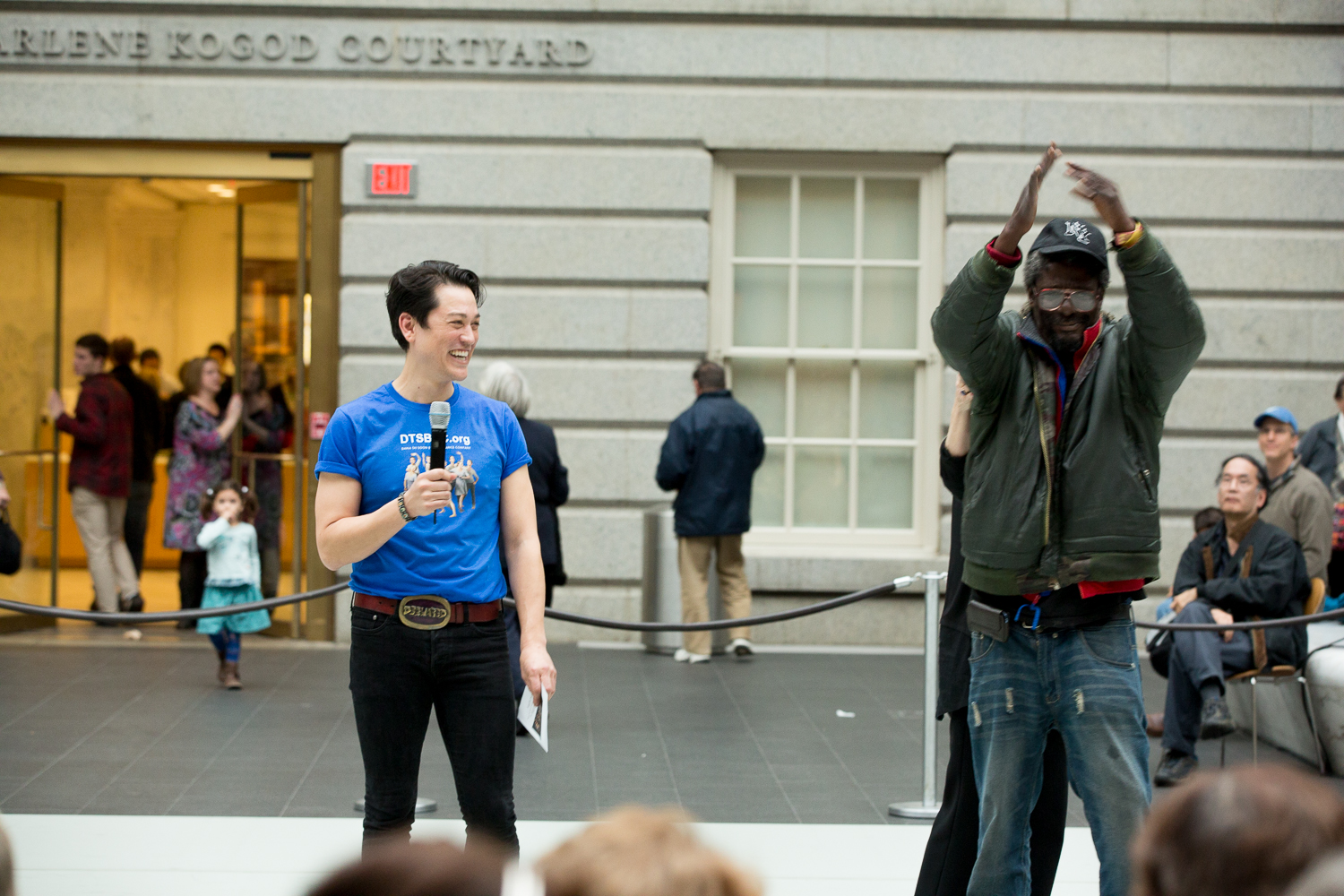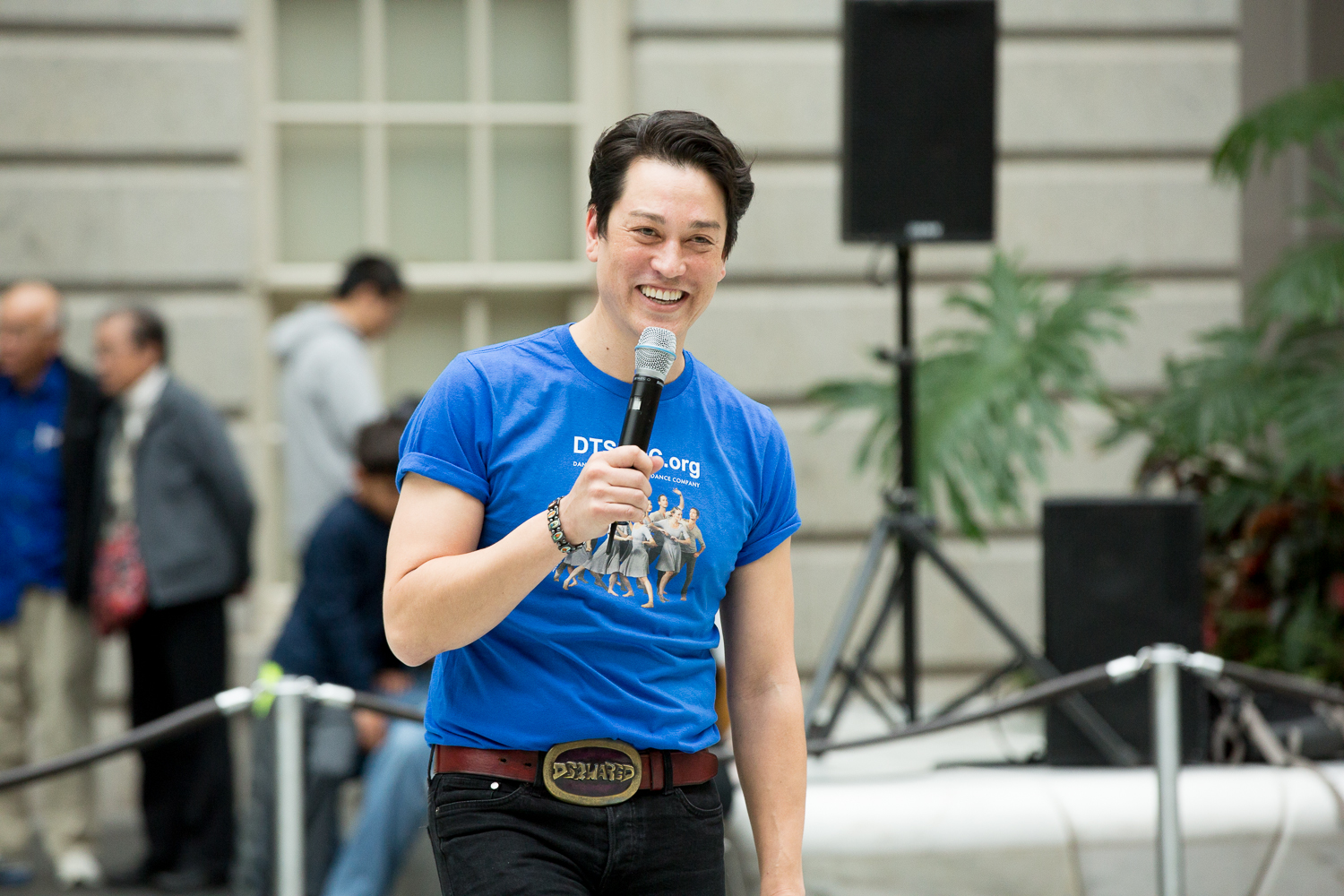Associate Professor and Chair of the George Washington University Department of Theatre and Dance Dana Tai Soon Burgess showcased his choreography at the National Portrait Gallery on Saturday.
Mr. Burgess is an incubator studio fellow this year—a GW faculty member chosen to receive a stipend or teaching release to focus on creative research. The program is in its second year after launching through the university-wide Arts Initiative. Mr. Burgess has been using his time as a fellow to serve as a resident choreographer for the National Portrait Gallery’s “Dancing the Dream,” the Smithsonian’s first-ever American dance exhibit. He is creating two dances influenced by the exhibit. His dance company performed the first, “Homage,” at the museum’s Kogod Courtyard on Saturday.
“Dancing the Dream,” curated by historian Amy Henderson, highlights dance from the late 19th century to today. The show includes images of choreographers and performers ranging from Fred Astaire to Beyoncé to explore how dance has contributed to American culture.
Ms. Henderson opened Saturday’s performance by describing how she put the exhibit together and why collaborating with Mr. Burgess was important to the show.
“Something I thought about was how to convey a sense of movement, and what better way than to get one of the greatest choreographers in the country, Dana Tai Soon Burgess,” she said.
Mr. Burgess briefly took the stage and explained that he drew inspiration directly from the exhibit to create “Homage.” He referenced artists whose portraits are featured in “Dancing the Dream,” like James Cagney, Elvis Presley, Martha Graham, Josephine Baker, John Travolta and Shirley MacLaine.
“I was really captivated by so many of the exhibit’s images, so I decided to research the images and really choose a montage of artists that spoke to me creatively,” Mr. Burgess said.
Eight dancers from the Dana Tai Soon Burgess Dance Company filled the center of the courtyard and began a stunning performance that encapsulated the history of American dance. Mr. Burgess set his choreography to a musical arrangement that included interviews with artists and had his dancers interpret the words through movement.
“What I realized is that between these interviews by the artists and these great musical compositions that are associated with the artist, there started to be a theme about life itself and the journey of an artist,” Mr. Burgess explained. “We realize how much dance is part of humanity, and how dancers and choreographers think.”
Following the dance piece, Mr. Burgess participated in a question-and-answer session with the audience. He answered questions about his favorite kind of dance, explaining that he loves contemporary dance’s ability to envelop many different styles but that he also fell in love with jazz while learning about artists like Robert Fosse and Liza Minnelli. He told the audience he chose to choreograph spoken interviews because he felt they revealed the vulnerabilities of artists.
Mr. Burgess also shared that he enjoyed working at the museum because it exposed a broader audience to dance.
“What’s so amazing about Washington is that our museums are completely open, and I love that because sometimes in situations where you might not know if a person has a dance background, they still find joy in what we do and we can still have a dialogue,” he said.
“Homage” is one of two pieces Mr. Burgess created as part of “Dancing the Dream.” The second piece will premiere in April 2014. Both performances will have a theater debut at the Kennedy Center in February.


